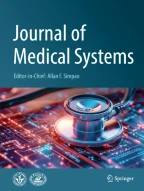Abstract
In order to provide enhanced medication safety for inpatients, the medical mechanism which adopts the modified grouping proof protocol is proposed in this paper. By using the grouping proof protocol, the medical staffs could confirm the authentication and integrity of a group of Radio-Frequency Identification (RFID) tags which are embedded on inpatient bracelets and the containers of drugs. This mechanism is designed to be compatible with EPCglobal Class-1 Generation-2 standard which is the most popular specification of RFID tags. Due to the light-weight computational capacity of passive tags, only the pseudo-random number generator (PRNG) and cyclic redundancy code (CRC) are allowed to be used in the communication protocol. Furthermore, a practical scenario of using this proposed mechanism in hospital to examine the medication safety is also presented.
Similar content being viewed by others
References
Ashton, Kevin (2006). The history of EPC’s future. RFID Journal Magazine, March/April 2006. Retrieved from http://www.rfidjournal.com/magazine/article/2254.
Bolotnyy, L., Robins, G. (2006). Generalized yoking-proofs for a group of RFID tags. Proceedings of the 3rd Annual International Conference on Mobile and Ubiquitous Systems. pp. 1–4.
Van de Castle, B., Kim, J., Pedreira, M. L. G., Paiva, A., Goossen, W., and Bates, D. W., Information technology and patient safety in nursing practice: an international perspective. Int. J. Med. Inform. 73:607–614, 2004 doi:10.1016/j.ijmedinf.2004.04.007.
Chao, C., Jen, W., Chi, Y., and Lin, B., Improving patient safety with RFID and mobile technology. Int. J. Electron. Healthc. 3:2175–192, 2007 doi:10.1504/IJEH.2007.013099.
Chassin, M. R., and Becher, E. C., The wrong patient. Ann. Intern. Med. 136:11826–833, 2002.
Chien, H.-Y., and Chen, C.-H., Mutual authentication protocol for RFID conforming to EPC Class 1 Generation 2 standards. Comput. Stand. Interfaces. 29:2254–259, 2007 doi:10.1016/j.csi.2006.04.004.
Cooper, M. C., Can a zero defects philosophy be applied to drug errors? J. Adv. Nurs. 21:3487–491, 1995 doi:10.1111/j.1365-2648.1995.tb02731.x.
Dantu, R., Clothier, G., and Atri, A., EAP methods for wireless networks. Comput. Stand. Interfaces. 29:3289–301, 2007 doi:10.1016/j.csi.2006.04.001.
Duc, D. N., Park, J., Lee, H., Kim, K. (2006). Enhancing security of EPCglobal Gen-2 RFID tag against traceability and cloning. Proceedings of the 2006 Symposium on Cryptography and Information Security, pp. 97.
EPCglobal Inc. (2007). Class-1 Generation-2 UHF RFID protocol for communications at 860 MHz–960 MHz version 1.1.0. EPCglobal Inc. Retrieved from http://www.epcglobalinc.org/standards/uhfc1g2/uhfc1g2_1_1_0-standard-20071017.pdf
Huang, H.-H., Ku, C.-Y. (2005). A secure method for RFID with key tag in supply chain management. Proceedings of the 34th Annual Meeting of Western Decision Sciences Institute, pp. 460–462.
Janz, B. D., Pitts, M. G., and Otondo, R. F., Information systems and health care II: back to the future with RFID: lessons learned—some old, some new. Commun. Assoc. Inf. Syst. 15:132–148, 2005.
Juels, A. (2004a). Yoking-proofs for RFID tags. Proceedings of the First International Workshop on Pervasive Computing and Communication Security, pp. 138–143.
Juels, A. (2004b). Minimalist cryptography for low-cost RFID tags. Proceedings of the Fourth Conference on Security in Communication Networks, pp. 149–164.
Kaelber, D. C., and Bates, D. W., Health information exchange and patient safety. J. Biomed. Inform. 40:Supplement 6S40–S45, 2007 doi:10.1016/j.jbi.2007.08.011.
Koshy, R., Navigating the information technology highway: computer solutions to reduce errors and enhance patient safety. Transfusion. 45:s4189S–205S, 2005 doi:10.1111/j.1537-2995.2005.00619.x.
Liao, P.-C., Liu, L., Kuo, F., Jin, M.-H. (2006). Developing a patient safety based RFID information system—an empirical study in Taiwan. Proceedings of 2006 IEEE International Conference on Management of Innovation and Technology, pp. 585–589.
Perrin, R. A., and Simpson, N., RFID and bar codes—critical importance in enhancing safe patient care. J. Healthc. Inf. Manag. 18:433–39, 2004.
Piramuthu, S. (2006). On existence proofs for multiple RFID tags. Proceedings of the 2006 ACS/IEEE International Conference on Pervasive Services, pp. 317–320.
Piramuthu, S., Protocols for RFID tag-reader authentication. Decis. Support Syst. 43:3897–914, 2007 doi:10.1016/j.dss.2007.01.003.
Saito, J., Sakurai, K. (2005). Grouping proof for RFID tags. Proceedings of the 19th International Conference on Advanced Information Networking and Applications, pp. 621–624.
Sandlin, D., SurgiChip—new technology for prevention of wrong site, wrong procedure, wrong person surgery. J. Perianesth. Nurs. 20:2144–146, 2005 doi:10.1016/j.jopan.2005.02.001.
Sun, P. R., Wang, B. H., and Wu, F., A new method to guard inpatient medication safety by the implementation of RFID. J. Med. Syst. 32:4327–332, 2008 doi:10.1007/s10916-008-9137-9.
Weis, S. A. (2006). New foundations for efficient authentication, commutative cryptography, and private disjointness testing. Ph.D. Thesis of Department of Electrical Engineering and Computer Science, Massachusetts Institute of Technology.
Wu, F., Kuo, F., Liu, L.-W. (2005). The application of RFID on drug safety of inpatient nursing healthcare. Proceedings of the 7th International Conference on Electronic Commerce, pp. 85–92
Author information
Authors and Affiliations
Corresponding author
Rights and permissions
About this article
Cite this article
Huang, HH., Ku, CY. A RFID Grouping Proof Protocol for Medication Safety of Inpatient. J Med Syst 33, 467–474 (2009). https://doi.org/10.1007/s10916-008-9207-z
Received:
Accepted:
Published:
Issue Date:
DOI: https://doi.org/10.1007/s10916-008-9207-z
